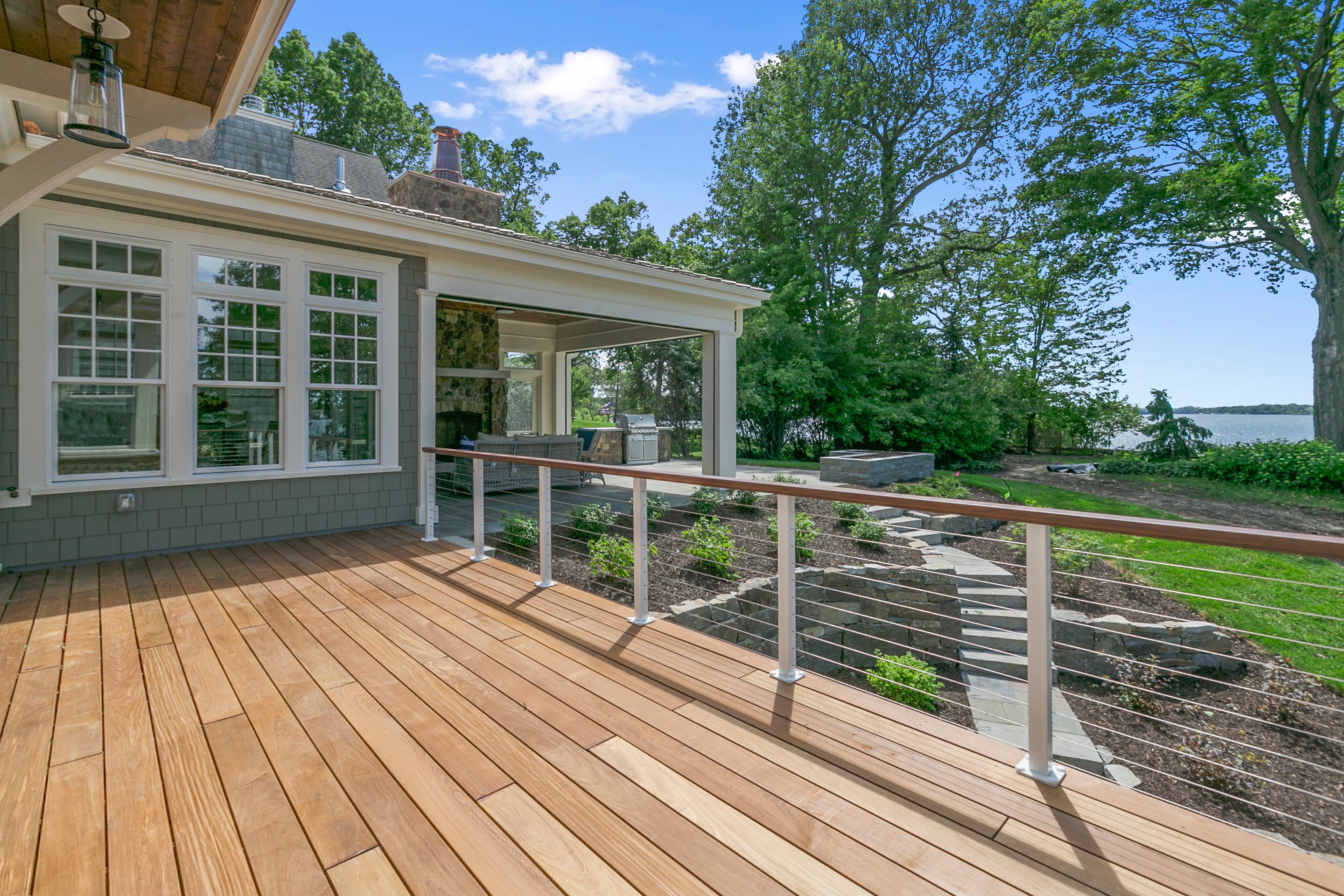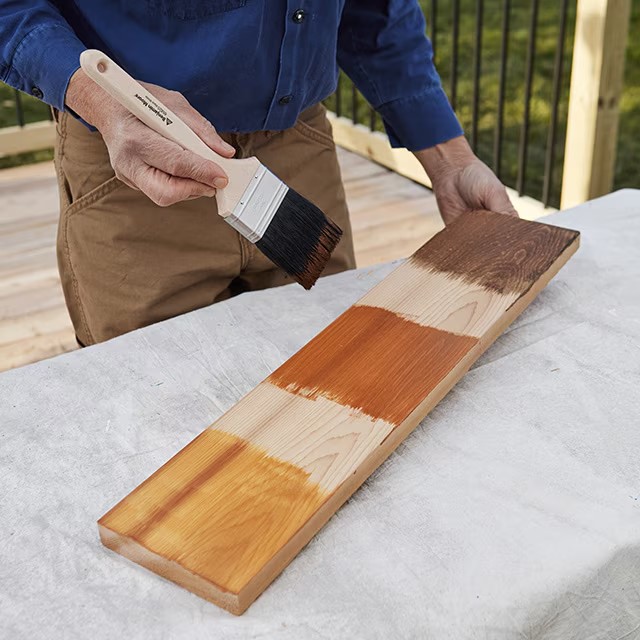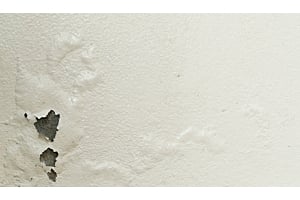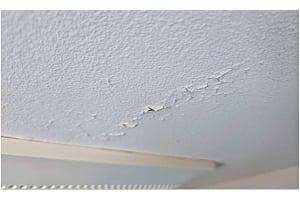
As spring approaches, you’re probably looking forward to enjoying your outdoor spaces. Our coatings expert Eddie is here to help you learn how to maintain and restore your cedar deck!
Most wood decks are made of soft woods, mainly pressure treated wood and cedar. Cedar decking is popular not only for its beautiful appearance, but it is also naturally resistant to rot and insects. Plus, a cedar deck can last for decades if it’s properly maintained, and new decks can be incredibly costly. To keep your deck looking its best, it’s recommended to stain it every 1-3 years. Re-staining a cedar deck also protects the wood from sunlight, which can turn cedar wood grey, and moisture, which will lead to algae and mold.
What Are My Options for Exterior Wood Deck Stains?

There are several finishing solutions available that can help protect and enhance the natural beauty of your deck. There are a few things to consider before choosing what type of finish to use.
- Deck Height: How high off the ground is the deck? If it’s less than 4 feet off the ground, you’ll want to stay away from solids and lean more toward a translucent, semi-transparent, or semi-solid oil finish. When a deck is close to the ground, the moisture from underneath can seep up through the wood and push the solid coating off. Solids sit on top of the wood surface whereas transparent oils with less solids penetrate deeper into the wood and seal it.
- Environment: What type of climate are you in? What are your spore counts? Are you in wetlands? Are you around a lot of trees? These are all mold and mildew issues. If you use an oil, you’ll have to clean it every year to prevent mildew growth and eventual rot. But if you use a solid latex, you’ll have less mold and mildew and it’ll be easier to clean.
- Deck Use: How will you be using your deck, and how much foot traffic will it get? Do you have dogs that may scratch it up with their nails? Will you be shoveling snow off of it? Are you worried about slip resistance? The rule of thumb when thinking about durability is the more solids a stain has, the more durability it will offer, but you’ll see less wood grain.
Transparent Stain
Products: Benjamin Moore Woodluxe Translucent Oil-Based Finish, Preserva Premium Timber Oil

Transparent or translucent stain can help protect the wood from water damage and mildew, as well as provide UV protection, without changing the color of the wood. This is a good option if you want to maintain the natural look of the cedar’s grain and texture. Arborcoat Translucent Oil is available in six ready mix colors: Natural, Redwood, Teak, Cedar, Mahogany, and Silver Grey. Preserva Premium Timber Oil is available in Ultra Clear, Natural Timber, Mountain Cedar, Heart Redwood, Canyon Brown, and Bleached Gray. Depending on sun exposure, climate, and foot traffic your deck gets, you may only get 1-2 years of wear before having to stain it again.
Semi-Transparent Stain
Product: Benjamin Moore Woodluxe Semi-Transparent Oil-Based Finish

A semi-transparent stain is a more durable oil-based stain that will add some more color to the wood while still allowing some of the natural grain to show through. Arborcoat Semi-Transparent Oil is available in 75 different colors and will last around 2-3 years before a recoat is needed.
Semi-Solid Stain
Product: Benjamin Moore Woodluxe Semi-Solid Oil-Based Finish

Arborcoat’s Semi-Solid oil stain is slightly more opaque than the Semi-Transparent oil stain, so you’ll see less of the wood’s grain, but offers more durability. It also comes in 75 different colors.
Solid Stains
Products: Benjamin Moore Woodluxe Waterborne Exterior Stain Solid, Preserva Solid Oil

Solid stains are fully opaque, so they cover the wood’s grain but give the most uniformity. When painting with a solid, there’s always the possibility of peeling, so you have to make sure your environment is right for its application. When applied correctly, solid stains offer the most durability and longevity. Benjamin Moore Arborcoat Waterborne Exterior Solid Stain is an acrylic latex product, as opposed to all of the other stains mentioned previously, which are oil. One advantage of an acrylic latex stain is that cleanup consists of only soap and water, whereas mineral spirits are needed to clean up oil stains. Arborcoat’s Solid stain is available in any of Benjamin Moore’s thousands of colors. Preserva Solid Oil is an oil finish with the most amount of solids. It’s fully opaque, so wood grain won’t be visible through it, but the wood’s texture will still show through. Preserva Solid Oil comes in six natural wood stain colors: Pacific Red, Cedar Fir, Cedar, Tamarack, Sequoia, and Redwood.
Best Practice Techniques for Application

Staining a deck can be time consuming, so you want to make sure you do it carefully and correctly to get best results.
When Can I Stain My Cedar Deck?

With soft woods, the first step to painting or staining your deck is checking for moisture using a moisture meter - the moisture must be below 17% before you start. Staining should be done on a dry day when the temperature is between 40-90 degrees. Avoid staining if rain is in the forecast within the next 48 hours.
Cleaning the Wood

The next step to rehabbing your cedar deck is a light cleaning with a deck cleaner. You may be tempted to use a pressure washer, but high pressure can damage your deck surface. We recommend using a wood care deck brush with Preserva Renewer & Cleaner Wood Cleaner, which contains no acids, corrosives, or bleach, so it isn’t too harsh on the wood. Preserva Renewer & Cleaner not only removes dirt and mildew, but it also removes mill glaze. Mill glaze is a glossy film that appears on milled lumber, and if it’s not cleaned off, deck stain or sealer will not properly penetrate the wood. If you do use a pressure washer, use the lowest pressure setting, or no more than 500-600 psi.
Sanding the Wood

If your deck is new wood, you’ll want to clean and sand it with 80-grit sandpaper. If your deck has an existing, peeling coating, use 180-220 grit sandpaper to remove it completely. This will open up the wood grain and allow the new coating to penetrate the wood.
Choosing Your Stain and Color

To help you decide which type of stain is right for your DIY project, speak with an expert at your local Ring’s End about your project. Finishes come in such a wide variety of colors, and unless you’re using a solid, you want to choose a color that complements the natural color of your cedar deck. If possible, paint a piece of scrap wood or inconspicuous spot on your deck to make sure the stain is the color you want.
Applying the Stain

Apply the stain evenly with a paintbrush, roller, or sprayer. With large areas, a large roller is easiest to use, as you can often coat 2-3 boards at a time. Be sure to follow the manufacturer’s instructions for drying times and recoating.
Troubleshooting Cracks and Peeling Paint

If you have cracks in your deck and the paint is lifting up, you likely have a moisture issue. When a deck is too close to the ground, moisture may not be able to escape properly. The deck also may not have been painted or stained in years, and the last time it was finished, it could have been done with the wrong type of coating. When wood cracks, moisture gets into the wood. Once direct sunlight hits that cracked wood, moisture is pulled back out and lifts up the paint. If this happens to your deck, don’t fret - you don’t need a new deck just yet! But your best bet is to start from the beginning. As mentioned above, use 180-220 grit sandpaper to remove the existing coating. Make sure you sink any nails, as you will get rust bleed if you sand off the nails’ galvanizing. Once your deck surface is fully sanded, use one of the oil finishes mentioned above, as it will penetrate the wood and prevent the kind of peeling or flaking you see with latex coatings. If you need to replace any rot with new cedar decking boards, we recommend staining with the semi-solid oil or solid oil, because if you use translucent or semi-transparent stains, the difference between the new and old boards will be obvious. With a semi-solid stain, the re-stained deck will look uniform.
Enjoy Your Deck!

If you have an old deck, don’t give up on it! Regular cleaning and maintenance will help prolong the life of your deck. Repairing and staining a cedar deck can be a time-consuming process, but it’s worth the effort to protect and enhance the beauty of your outdoor living space.Visit one of our Ring’s End locations for expert advice and everything you need to get your project started.





